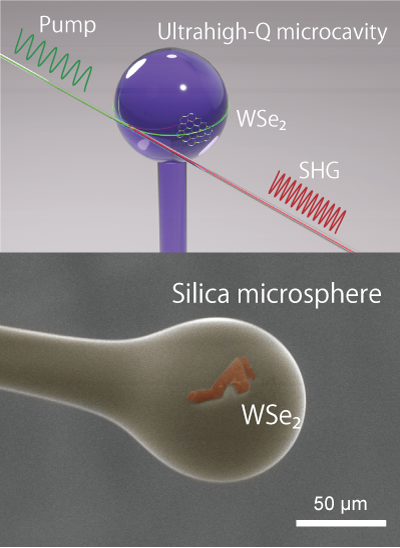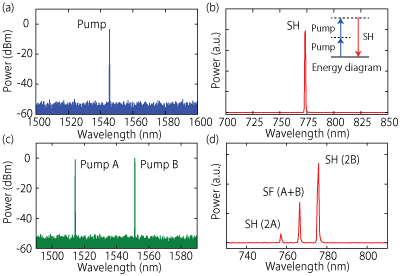Research:Van der Waals decoration of ultra-high Q silica microcavities for χ(2)-χ(3) hybrid nonlinear photonics
In recent years, the utilization of atomically-thin two-dimensional materials has been attracting great attention in various applications such as next-generation semiconductor devices. Transition metal dichalcogenides such as tungsten diselenide (WSe2) exhibit high-quality direct-transition semiconductor properties in a single layer with a thickness of approximately 0.7 nm. Moreover, these materials potentially possess giant nonlinear susceptibilities despite their ultimate thickness.

Here we demonstrated efficient second-order nonlinear frequency conversion in a monolayer WSe2 integrated high-Q silica microcavity with a low-power, continuous-wave excitation. When a low-loss hybrid microcavity was pumped by a telecom laser, a clear peak was observed around 773 nm, which is half the wavelength of the excitation wavelength, confirming the occurrence of second harmonic generation. We also demonstated sum-frequency generation by two-color excitaion with different lasers. Finally, we revealed the coexistence of second- and third-order nonlinearities as well as its flexible control in a single device.

Silica does not inherently exhibit second-order nonlinearity. This method breaks the intrinsic properties of material and offers the further development of nanophotonic devices.
To learn more about this work, please refer to
van der Waals decoration of ultra-high-Q silica microcavities for χ(2)-χ(3) hybrid nonlinear photonics
Nano Lett.
24, 4209 (2024).
![]()